For the Arafura and Timor Seas (ATS) region, climate change represents an environmental transboundary issue of utmost priority. According to a 2021 report by the Intergovernmental Panel on Climate Change (IPCC), recent changes in the climate are widespread, rapid and intensifying, and unprecedented in thousands of years. With that in mind, and to better understand the impacts of climate change in the ATS, the ATSEA-2 Project conducted its own Climate Change Vulnerability Assessment (CCVA) for the region, led by Dr. Johanna Johnson from C2O Pacific.
Conducted during 2020 and 2021, the assessment provides evidence that the ATS region’s oceans are indeed growing warmer and more acidic, while also demonstrating that sea levels in the region are rising. Coupled with increasing threats from extreme weather – such as heavy rainfall, droughts and heatwaves being observed in coastal communities – the immediate impacts of climate change are clear to see in the world around us. The cross-cutting nature of this damage has made it the biggest challenge of our time.
To utilise the regional vulnerability results and apply them effectively at a local scale, ATSEA-2 produced the Guide for Facilitators and Decision-makers (also known simply as ‘the Guide’). Its objective is to facilitate the development of targeted and appropriate adaptation actions, then support the implementation of these actions by communities on the frontlines of climate change. In 2021, the Guide was trialled by Kertabumi Institute in Oeseli Village, Rote Ndao, East Nusa Tenggara Province; this process was documented in a case study. Similar CCVAs were also conducted in Viqueque Municipality, while an Ecosystem Approach to Fisheries Management (EAFM) plan for red snapper fisheries along the southern coast of Timor-Leste was facilitated by Fishwell Consulting.
Climate Change Training Workshop in Bali
From 13–15 September 2022, C2O Pacific, Kertabumi Institute and the ATSEA-2 Project worked together to organise a three-day climate change training workshop in Sanur, Bali, Indonesia. Entitled Training Workshop: Improving Climate Change in the Arafura and Timor Seas Region, the event set out to improve climate change understanding in the ATS region, raise awareness of relevant adaptation strategies, disseminate the CCVA results and the Guide, and enable participants to deliver the Guide effectively and develop an adaptation plan. Eighteen participants from various backgrounds (e.g., national and local government officials and practitioners) from Indonesia, Papua New Guinea and Timor-Leste attended the workshop.
Dr. Johanna Johnson and David Welch from C2O Pacific, along with Ikbal Alexander and Maria Marghareta from Kertabumi Institute, formed an expert panel of contributors and facilitators at the training; in addition, Dr. Bea Pena-Molino from CSIRO, Australia presented a climate change projection for the ATS region, while Dr. Reny Puspasari from the Indonesian National Research and Innovation Agency, Domingos Lequi Siga Maria from UNDP Timor-Leste and David Mills from WorldFish shared Indonesia’s and Timor-Leste’s efforts to tackle climate change in the marine and fisheries sector. Lastly, Matthew Fox from Fishwell Consulting shared how he had successfully integrated the Guide in Timor-Leste’s red snapper EAFM plan.

The training was designed to be as interactive as possible. To that end, presentations were interspersed with a range of group activities, workshops and discussions, during which participants shared their experiences of how climate change has affected their communities. “We see some areas with sea water rising and affecting fish species such as barramundi,” said Dainah Gigiba, who is the South Fly Fisheries District Officer in PNG. “People move because the water rises,” she observed. Fortunately, many countries are growing increasingly aware of the climate change impacts. Luh Putu Ayu Savitri Chitra Kusuma, Junior Analyst of the Indonesian Center for Marine Research noted that climate change mainstreaming already happens at different levels, from grassroots community to national government.
Near the end of the training, Welch reiterated: “climate change is here to stay,” while also noting that this does not mean we should just sit idly by. As advised by Dr. Johnson, we need to act not only by responding or being reactive but also by looking into the future and planning proactively to mitigate the future impact. The training participants are expected to apply the Guide at their working sites and spread the word about the Guide to their relevant institutions and partners.
Following successful completion of the training workshop, the ATSEA-2 Project will continue to raise awareness about and build resilience against climate change. In practice, this will be achieved by disseminating the Guide and updating its Transboundary Diagnostic Analysis and Strategic Action Program.
By Casandra Tania


